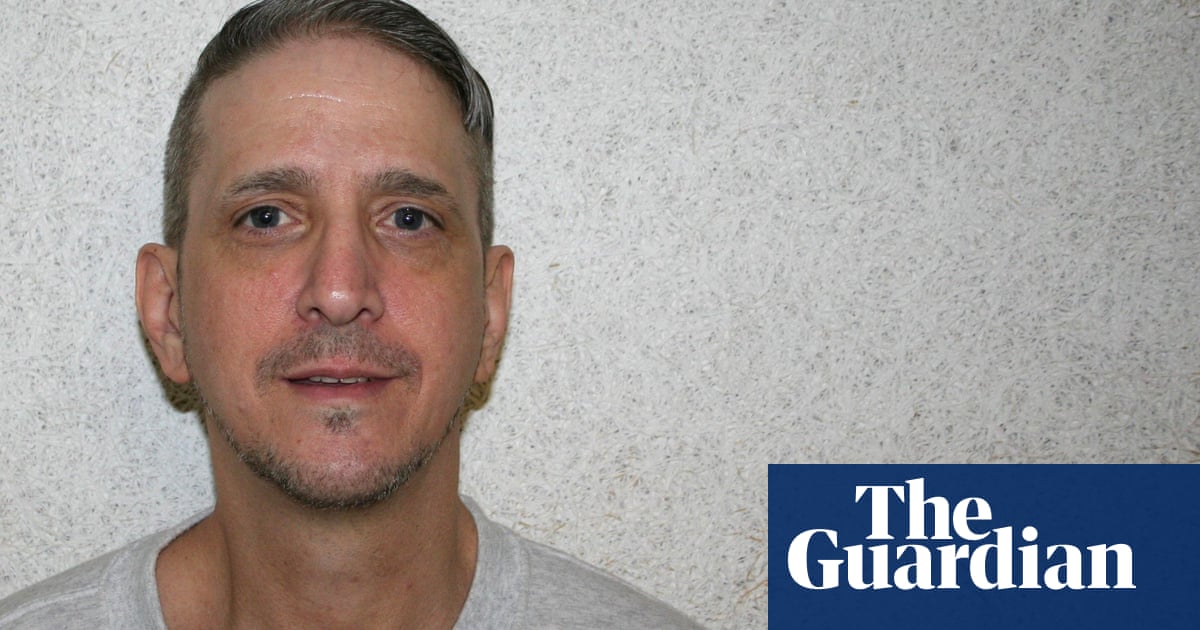
The bestselling writer John Grisham has joined scores of bipartisan politicians, lawyers, scientists and doctors in sounding the alarm that Texas is about to execute an innocent man convicted of a crime that never happened.
Grisham, whose legal thrillers have been turned into such Hollywood blockbusters as The Firm and The Pelican Brief, spoke out on Tuesday about the case of Robert Roberson, 57. Roberson has been on death row in Texas for more than 20 years for violently shaking to death his two-year-old daughter, Nikki.
Roberson is scheduled for execution on 17 October. Should his death by lethal injection go ahead he would be the first person in the US executed on the basis of “shaken baby syndrome” – a medical hypothesis from the 1970s that has been widely debunked as a form of junk science.
“What’s amazing about Robert’s case is that there was no crime,” Grisham told reporters. “In most death conviction cases, you’ve got a murder and somebody did it, but in Robert’s case there was no crime and yet we’re about to kill somebody for it in Texas. It’s so infuriating.”
Grisham’s comments came as Roberson’s lawyers filed a 62-page clemency petition with the Texas board of pardons and paroles calling for a commutation of his death sentence. The petition is a last chance for the prisoner, who is now at the mercy of the courts or Texas’s governor, Greg Abbott, to whom the board reports.
As his execution date on 17 October approaches, Roberson’s options are closing down. Last week the Texas court of criminal appeals denied his appeal.
The petition sets out boldly for Roberson’s innocence, stating that this is a case not of the wrong man having been condemned, but one in which the crime for which he was accused never even happened. It says: “No offense occurred … Mr Roberson is actually innocent of the offense for which he was convicted and sentenced to death based on pseudo-science that has since been discredited.”
Grisham said he was keen to get involved in the campaign to save Roberson’s life because “I just have a real anger at these cases. I can’t let them go, I think about them all the time. Especially a case like Roberts where we are a month away, the clock is ticking, and yet we have clear scientific proof that he didn’t kill Nikki.”
The author began life working as a lawyer in criminal cases in a small town in Mississippi. He wrote his first novel, A Time to Kill, in 1989 and went on to have a stream of bestsellers.
In 2006 he wrote his first non-fiction book, the Innocent Man, about Ron Williamson who was wrongly convicted of rape and murder and put on death row in Oklahoma until he was exonerated in 1999. From there, Grisham joined the board of the Innocence Project and Centurion Ministries which have helped to exonerate at least 200 people from death row in the US over the past half-century.
His next book, Framed, which comes out two days before Roberson’s scheduled execution, is a non-fiction work that narrates 10 true stories of people who were wrongly found guilty by a system distorted by racism, corruption and flawed testimony. “I’m up to my ears in wrongful convictions,” he said.
Grisham is not the only public figure to back Roberson in his final countdown to death. More than 30 prominent scientists and doctors, a cross-party group of 84 Texas legislators, 70 lawyers who have represented clients wrongly accused of child abuse, and a range of autism advocacy groups lent their support on Tuesday to this last-ditch effort to reprieve the prisoner.
The clemency petition argues that Roberson’s conviction was based on three serious mistakes. When Nikki was rushed to hospital in February 2002 in a comatose state, medical personnel concluded that she had been violently shaken without looking at her actual medical record.
On the back of that initial error, law enforcement officials and doctors failed to investigate further. As a result, they missed critical symptoms, including that the girl was ill with a fever of 104.5F (40.3C) shortly before she fell unconscious, had undiagnosed pneumonia, and had been given medical drugs that have since been deemed life-threatening for children – all of which could explain her dire state.
The third mistake, the petition argues, is that detectives and medical staff who came into contact with Roberson, unaware that he was autistic, interpreted his non-expressive demeanor as the posture of a callous killer and not as a product of his condition.
Brian Wharton, the lead detective in the case who testified against Roberson at trial, now believes that the entire prosecution that he spearheaded was based on a fallacy. Last year he told the Guardian: “There was no crime scene, no forensic evidence. It was just three words: shaken baby syndrome. Without them, he would be a free man today.”
Shaken baby syndrome, or SBS for short, is a child abuse theory that emerged in the early 1970s. It was hailed as an explanation for why some children presented with severe, and sometimes fatal, illness with signs of internal head trauma but little or no sign of external injury.
An early proponent of the theory was a British pediatric neurosurgeon, Norman Guthkelch, who in 1971 posited that violent shaking of the child could be a possible cause. The concept spread rapidly until it had the status of received knowledge.
Since then, however, leading scientists have questioned the reliability of SBS, both as a medical diagnosis and as a forensic methodology used in criminal cases. More than 80 alternative non-violent causes of the symptoms have been identified, including short falls and illness – both of which were evident in Nikki’s case.
Doubts have grown about the syndrome to the extent that many authorities now consider it unreliable, including Guthkelch himself who has expressed alarm about how the theory had been used to prosecute thousands of parents for child abuse. Concern has spread across the criminal justice system and 32 individuals convicted on the basis of SBS have been exonerated since 1993, according to the National Registry of Exonerations.
Grisham likened Roberson’s case to that of Cameron Todd Willingham who was executed by Texas in 2004 for murdering his three young children. Willingham was accused of setting fire to the family home on the basis of forensic arson theories that were found to have been junk science.
“Twenty years ago Texas executed a guy for a crime that never occurred,” Grisham said. “Now here we are 20 years later and we’re down to another execution where there was no crime and where the science has been debunked. Texas is about to execute another innocent man.”












